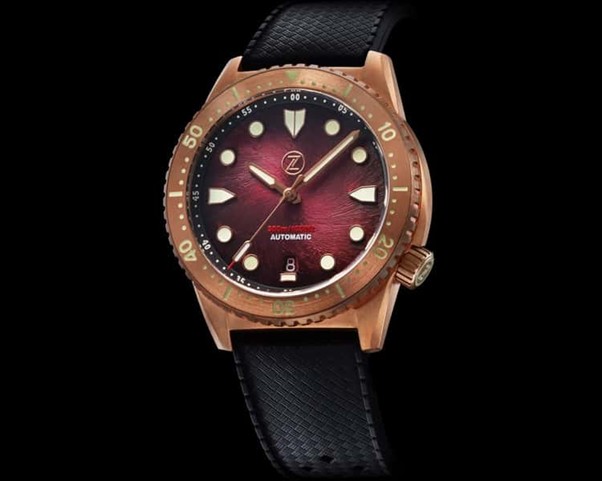Affordable, limited, and fiercely independent
A New Era of Independent Watchmaking
For decades, prestige in horology meant heritage. Rolex, Omega, and Patek Philippe dominated collections—and conversations. But in recent years, a new wave of collectors has emerged, gravitating toward a different kind of watchmaking: personal, limited, and design-first. Welcome to the world of microbrands.
These aren’t fashion watches or quartz novelties. Today’s leading microbrands are built with sapphire crystals, Swiss movements, bronze and titanium cases, and serious mechanical chops. More importantly, they reflect the ethos of their founders—people who love watches, not just the business of selling them.
Unlike mass-market brands that launch dozens of variants a year, microbrands release slowly, thoughtfully, and with intention. That slower pace attracts buyers who want to know not just what they’re buying—but why it was made.
Platforms like Coveted have become essential for discovering and tracking this new class of watchmakers. Brands like Anordain and Zelos are among the most admired, each carving a niche by doing things differently—and doing them well.
What Defines a Microbrand?
Microbrands are small, independent watch companies, often run by a designer, engineer, or collector with a clear vision. They usually sell directly to consumers, bypassing retail markups while delivering better specs, more limited production, and deeper design intention.
Their customers are not chasing logos. They’re chasing meaning. A watch that tells a story. A case material that ages. A dial that feels alive. Microbrand watches often do more with less—and that’s exactly why they’re gaining traction.
Importantly, microbrands are also built for a more engaged buyer—someone who appreciates the nuance behind a caseback engraving, or the reason behind a specific lume color or dial curvature. This audience isn’t simply purchasing an accessory. They’re participating in a narrative.
Inside the Studio: Passion Over Prestige
What makes the microbrand space exciting is the sheer variety of voices. While mainstream brands often converge on trends, independents are free to pursue their own philosophies.
Anordain, for example, brought the nearly lost art of vitreous enamel dials back to life. Hand-fired in Glasgow, their dials shimmer with layers of glass melted at 800°C. Each one takes days to make and develops its own subtle character in the kiln. It’s not just artisanal—it’s experimental.
Then there’s Zelos, which helped redefine the modern bronze dive watch. Founded in Singapore, the brand has become a cult favorite thanks to its bold use of materials—meteorite, forged carbon, Damascus steel—and its uncompromising specs. With water resistance ratings up to 1000m, sapphire crystals, and luminous components that rival Seiko’s best, they’re not just design statements—they’re serious tools.
These two brands reflect a larger ethos shared by many microbrands: intentionality. They prioritize craftsmanship over mass appeal and storytelling over status. That approach resonates deeply with collectors tired of algorithms dictating design trends and retailers controlling access.
Community-Driven, Not Influencer-Led
Unlike traditional luxury watchmakers, microbrands typically don’t invest in celebrity ambassadors or polished ad campaigns. Instead, they grow through grassroots word of mouth. Watch forums, newsletters, Discord groups, and subreddit communities are where buzz is built—and trust is earned.
On platforms like r/Watches, you’ll find Zelos owners sharing bronze patina progress shots, Anordain fans comparing subtle dial tones under different light, and first-time buyers asking which 38mm microbrand case wears best on a 6.5” wrist. It’s an active, helpful, and refreshingly transparent ecosystem.
And the brands participate, too. Most founders are visible—writing updates, replying to emails, and offering insight into delays, design tweaks, or future plans. This direct dialogue helps forge long-term loyalty. You’re not buying from a brand. You’re buying from a person.
Even the way these watches are sold supports this transparency. Instead of opaque boutique pricing or AD games, microbrands tend to publish clear pricing, availability timelines, and production numbers. Buyers know how many units are being made, when they’ll ship, and what to expect. It’s refreshing in an industry where scarcity is often manufactured for effect.
More Than Value: Emotional Return on Investment
Microbrands are often praised for offering “specs for the money.” And yes, it’s true—you can find bronze watches with meteorite dials, COSC-grade Swiss movements, and domed sapphire crystals for under $1,000. But the real value lies in how these watches make people feel.
There’s something deeply personal about wearing a limited-run timepiece that isn’t trying to impress everyone—only you. A bronze diver that changes color with time. An enamel dial that catches light differently every day. A case size that was chosen because it just feels right—not because it will sell more units in department stores.
Microbrands also lend themselves to discovery. Unlike legacy luxury models you’ll find in every terminal and billboard, these pieces often spark curiosity. They invite questions. And with that, a richer conversation around watchmaking itself.
This connection results in watches that are worn, not flipped. Many owners say they wear their microbrand watches more than their big-name pieces—not because they’re worth more, but because they mean more.
As Fratello noted in a recent review of the trend, “microbrands are now commanding attention not just for what they cost—but for what they represent: transparency, identity, and unfiltered passion.”
The Shift in Watch Culture
We’re living in a moment where the idea of collecting is being redefined. Younger collectors especially aren’t necessarily looking for investment-grade pieces. They’re looking for conversation-starters. For watches they connect with. For craftsmanship they can research and respect.
Microbrands deliver exactly that. Whether it’s the organic patina of a bronze Zelos or the hand-drawn typography of an Anordain, these watches build personal stories with every wear. In a sense, microbrand ownership feels like participation—not just possession.
And with collector resources like Coveted now cataloging specs, resale trends, and model histories, the knowledge gap between new buyers and seasoned collectors is shrinking fast.
Final Thoughts
Microbrand collecting isn’t just a detour from mainstream luxury. It’s a destination of its own. For those drawn to meaningful design, honest communication, and small-scale excellence, microbrands offer a refreshing alternative to big-box prestige.
And if you’re just starting your journey, Coveted is the place to begin. It’s where you can track upcoming releases, compare models, and explore the independent brands changing the face of modern horology—one thoughtful timepiece at a time.


